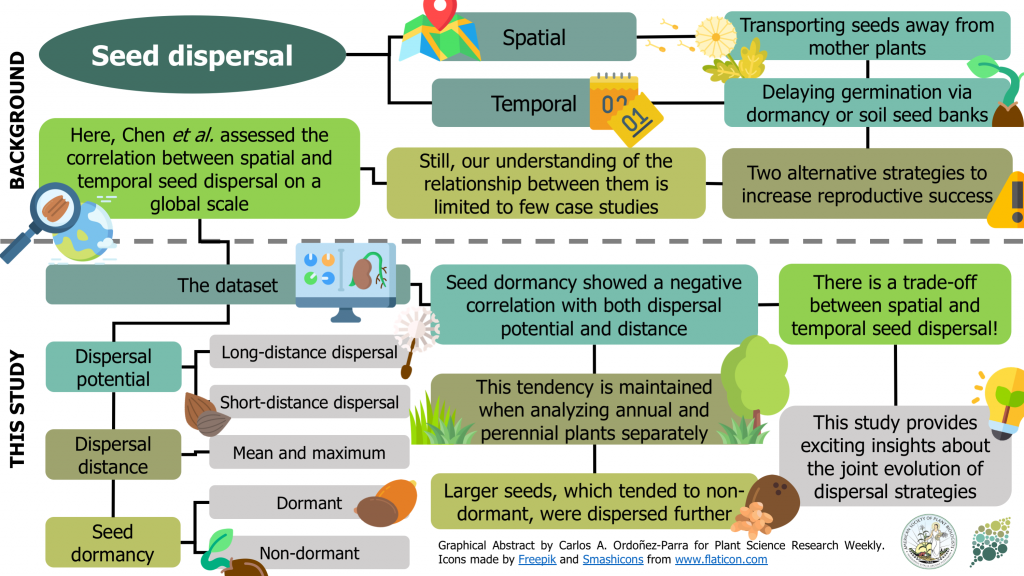
Review: Trade‐off between seed dispersal in space and time (Ecol. Lett.)
Plant Science Research Weekly
Seeds can be dispersed in space (i.e., away from their mother plants) or time (i.e., delayed germination via seed dormancy or persistent soil seed banks). These contrasting strategies have traditionally been considered to increase reproductive success, but our understanding of their relationship is…
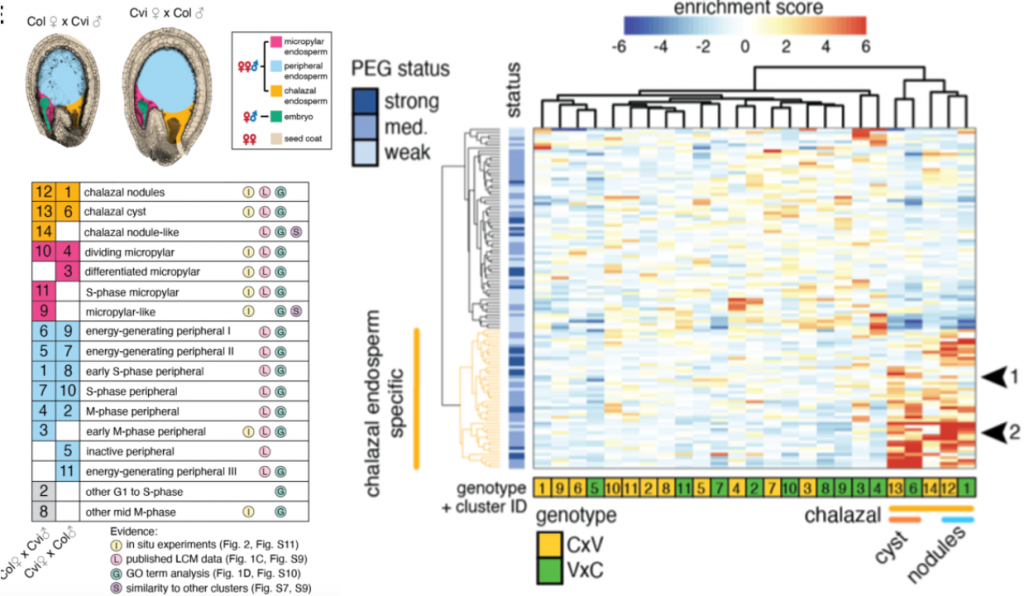
Single nucleus analysis of Arabidopsis seeds reveals new cell types and imprinting dynamics (bioRxiv)
Plant Science Research WeeklyArabidopsis seeds consist of various tissue like seed coat, embryo, and endosperm. The endosperm provides the nutrient supplies to the growing embryo and has three domains namely, micropylar (surrounding embryo), chalazal (opposite end of the seed), and peripheral (in between micropylar and chalazal)…
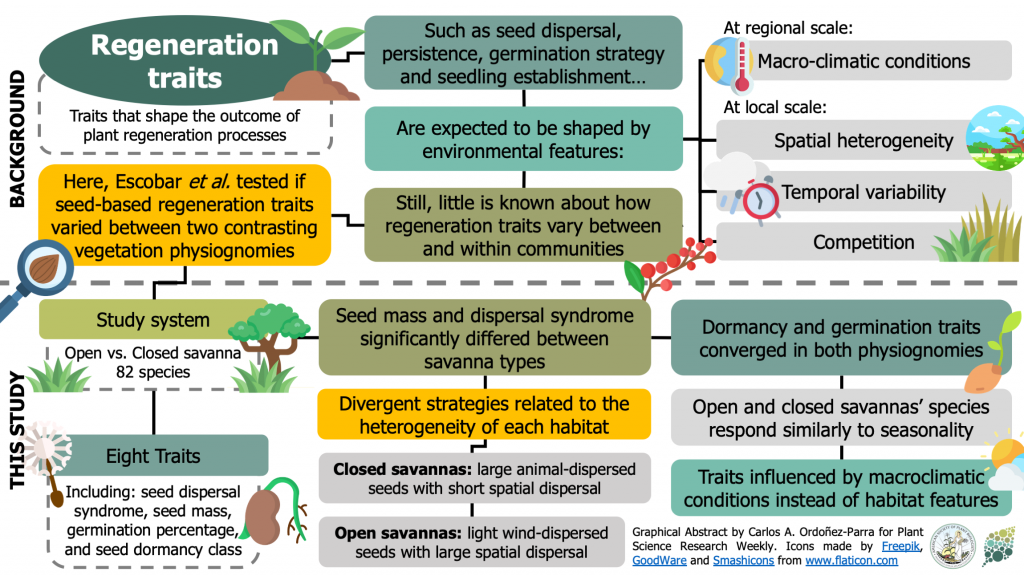
Do regeneration traits vary according to vegetation structure? A case study for savannas ($) (J. Veg. Sci.)
Plant Science Research WeeklyRegeneration traits –such as germination strategies, seed dormancy, and seedling establishment– are presumably shaped by environmental variables that operate at different temporal and spatial scales. However, empirical evidence about the variation is lacking for most regeneration seed traits. Here,…
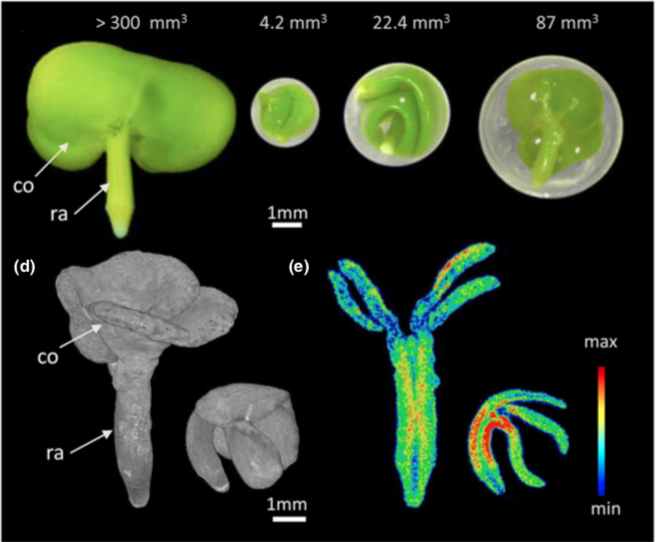
The process of seed maturation is influenced by mechanical constraints (New Phytol.)
Plant Science Research WeeklyDeveloping organs need to sense their surroundings to modulate their growth. In the case of embryos, their development is physically limited by the embryo sac; thus, they must assess the space they have available for growing and modulate their growth accordingly. In this paper, Rolletschek et al. report…
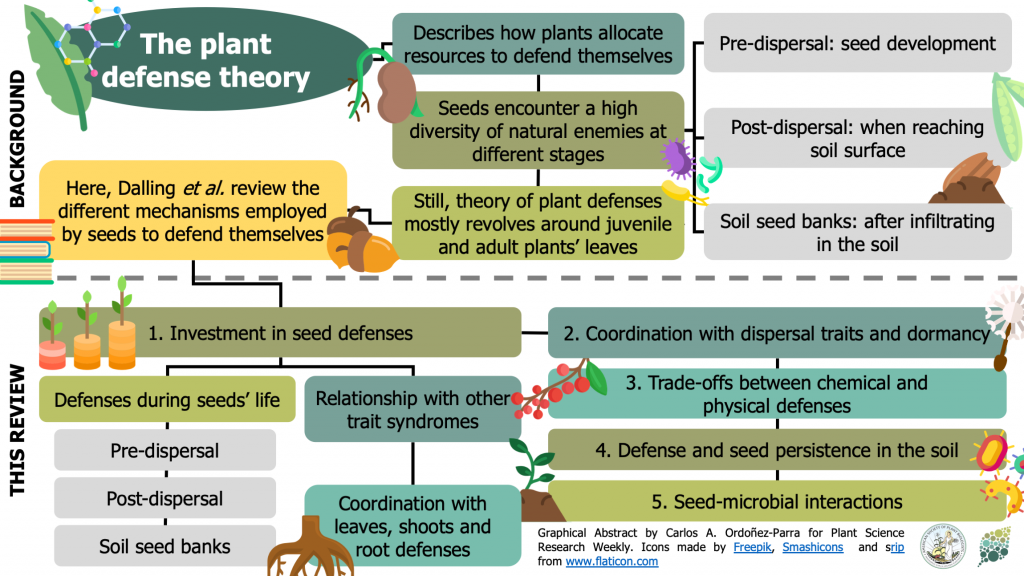
Review: Extending Plant Defense Theory to Seeds (Annu. Rev. Ecol. Evol. Syst.) ($)
Plant Science Research WeeklyPlants have developed multiple mechanisms to deal with the natural enemies they encounter through their life. In consequence, the Plant Defense Theory has arisen to assess how plants allocate resources to this purpose. However, much of the efforts in this matter has revolved around the defense that occurs…
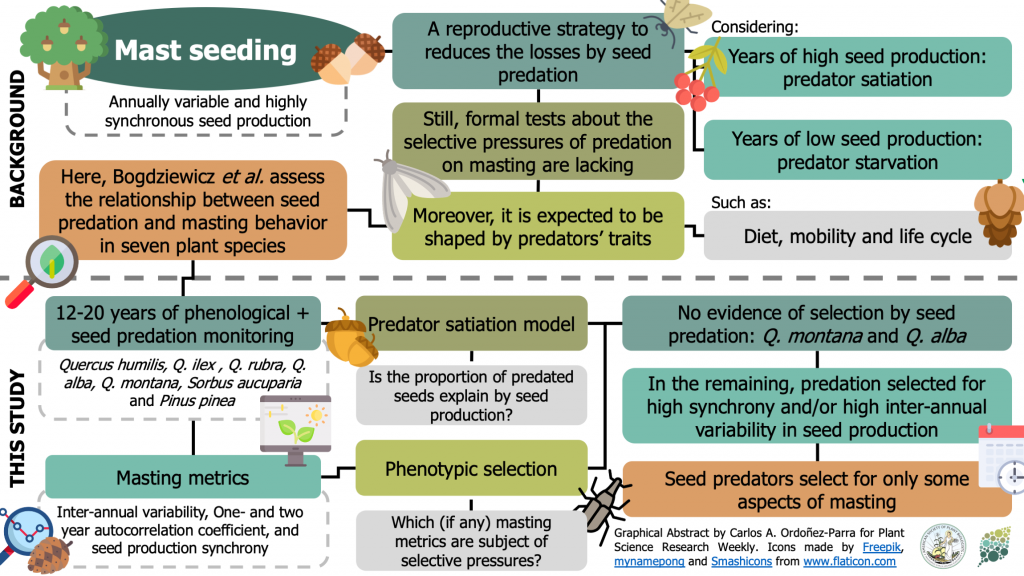
Seed predation selects for reproductive variability and synchrony in perennial plants (New Phytol.) ($)
Plant Science Research WeeklyInstead of regularly flowering and fruiting each year, some long-lived species exhibit annually variable reproduction events. This phenomenon, known as masting, is considered an adaptation to reduce the losses from seed predation: in years of high reproduction, seeds are so abundant that predators become…
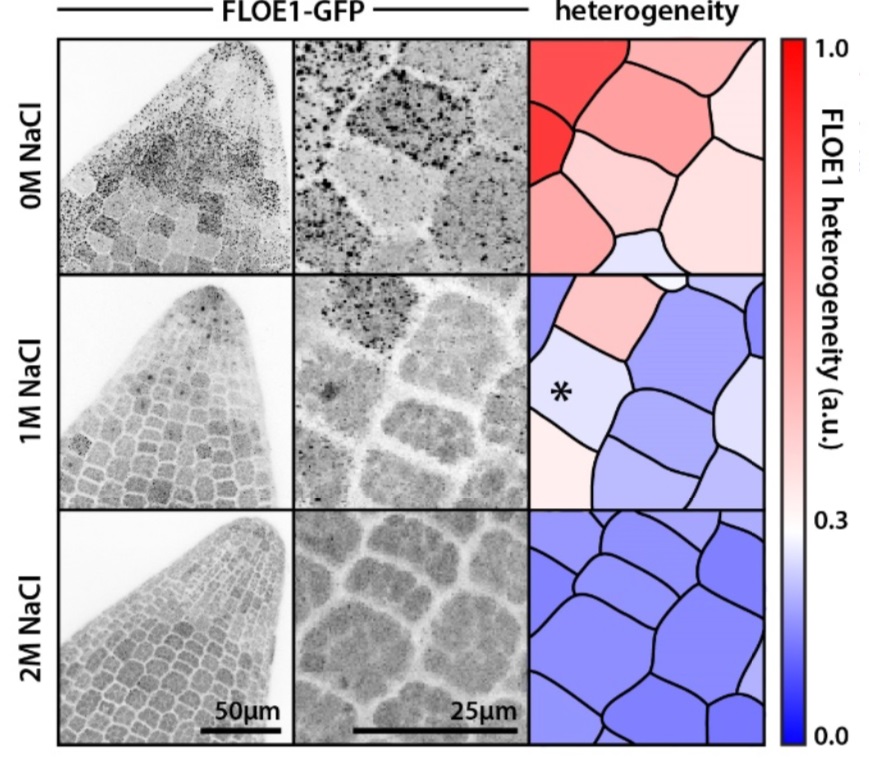
Hydration-dependent phase separation of a prion-like protein regulates seed germination during water stress (bioRxiv)
Plant Science Research WeeklyPlant seeds can remain dormant for several years under stress conditions and subsequently germinate once favorable conditions return. Even though this phenomenon has been known for many years, what keeps the seed from germinating during the unfavorable conditions, especially during water deficit conditions,…
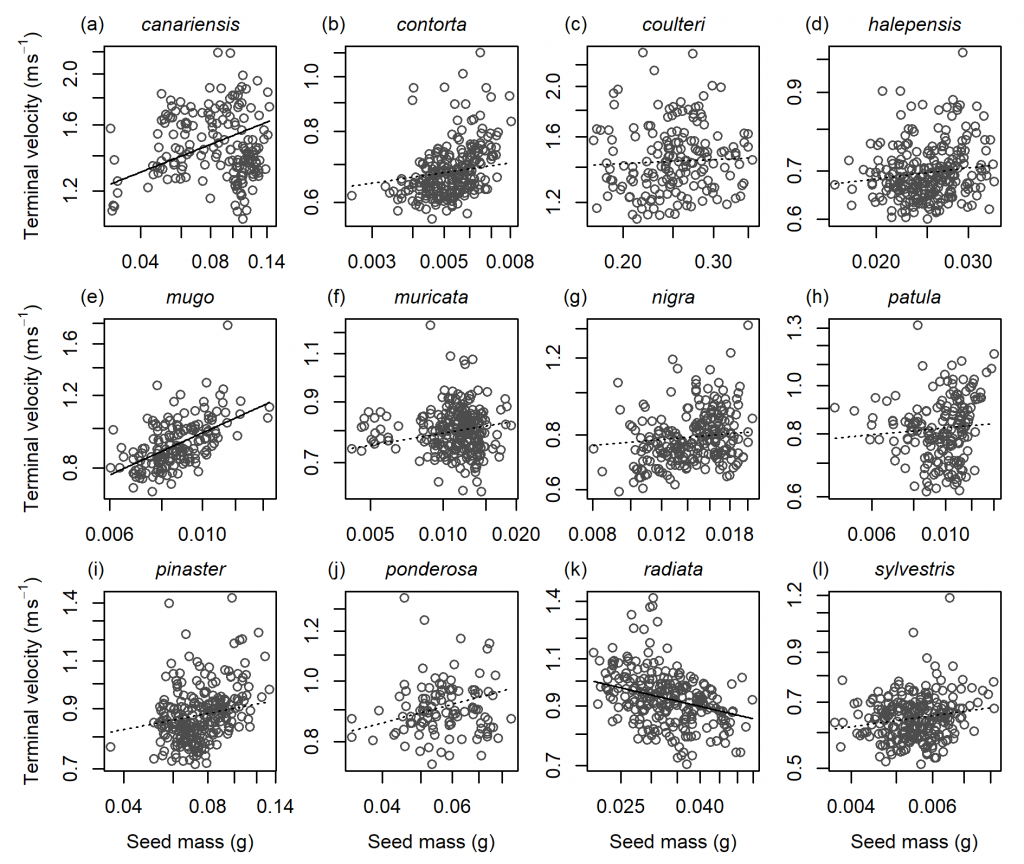
Limited evidence for a consistent seed mass-dispersal trade-off in wind dispersed pines (J. Ecol.) ($)
Plant Science Research Weekly The dispersal capacity of wind-dispersed seeds is expected to be shaped by seed mass, with lighter seeds dispersed further due to low terminal velocity (i.e., maximum velocity while falling). However, this relationship has been mostly tested comparing species from different taxonomic groups, rather…
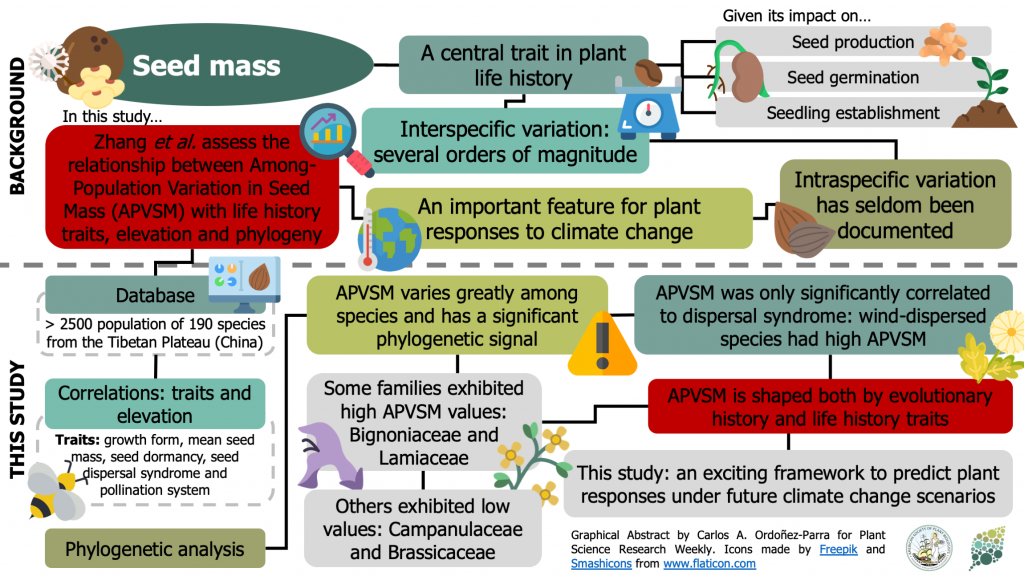
Among-population variation in seed mass for 190 Tibetan plant species: Phylogenetic pattern and ecological correlates (Glob. Ecol. Conserv.)
Plant Science Research WeeklySeed mass is a central trait in plant life history that impacts on seed production, germination, and establishment. Several studies have documented the variation in seed mass between species, but little is known about its variation among populations of the same species. In this paper, Zhang et al. tested…

